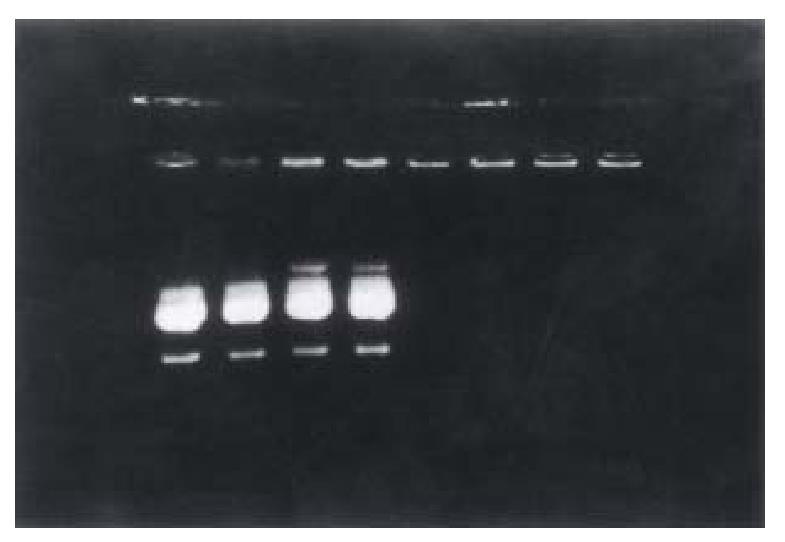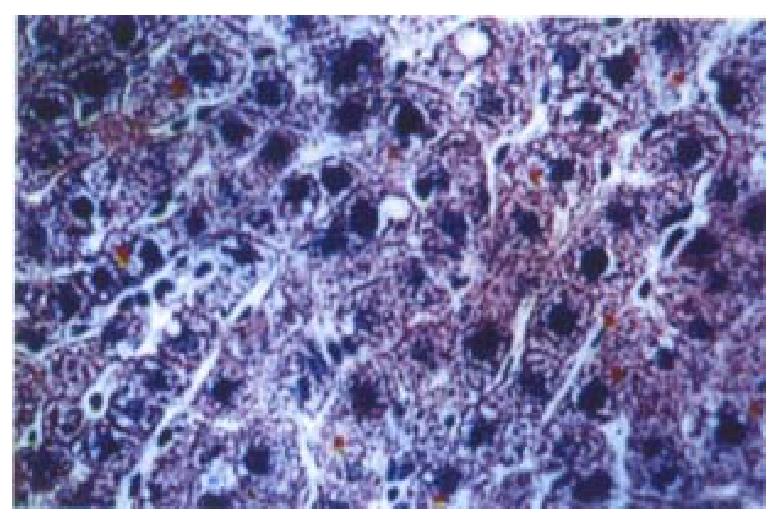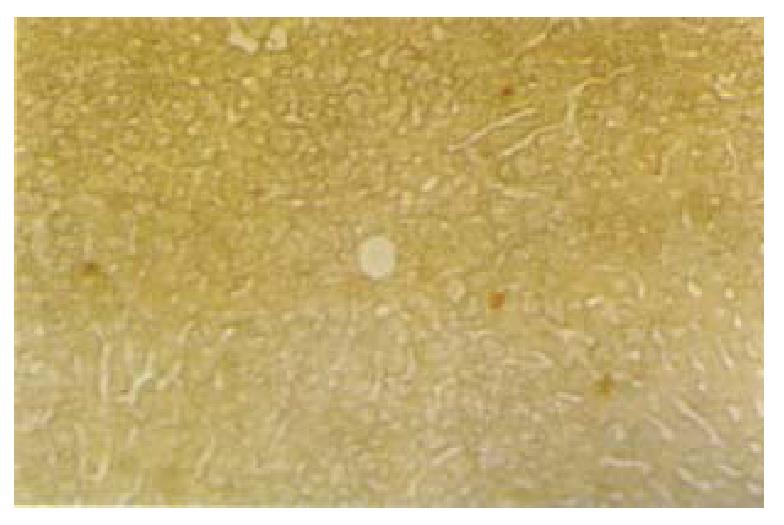Copyright
©The Author(s) 2000.
World J Gastroenterol. Aug 15, 2000; 6(4): 526-531
Published online Aug 15, 2000. doi: 10.3748/wjg.v6.i4.526
Published online Aug 15, 2000. doi: 10.3748/wjg.v6.i4.526
Figure 1 Determination of the optimal proportion of liposome bound to plasmid by 1% agarose electrophoresis.
Lane 1-8 are respectively 1-8 μL lipofectamine mixed with 1 μg pTM/MMP-1 plasmid. Plasmid 1 μg could only be encapsulated complet ely by more than 5 μL lipofectamine.
Figure 2 Determination of the optimal proportion of G-PLL bound to plasmid by 1% agarose electrophoresis.
Lane 1-8 are respectively 0.05 μg, 0.1 μg, 0.2 μg, 0.3 μg , 0.4 μg, 0.5 μg, 1.0 μg, and 1.5 μg G-PLL mixed with 1 μg pTM/ MMP-1 plasmid. Plasmid 1 μg could only been bound completely by more than 0.4 μg G-PLL.
Figure 3 Immunostaining of flag-domain tag in the liver of rat 24 h after the admini stration of the plasmid bound to G-PLL (galactose-terminal glyco-poly-L-lysine) via cauda vein.
× 200
Figure 4 In situ hybridization with biotin labeled oligonucleotide probe in the liver 3 wk after the administration of the plasmid encapsulated by liposome (lipofectamine) via cauda vein.
× 100
Figure 5 The distribution and expression of the plasmid bound to liposomes or G-PLL (gal actose-terminal glyco-poly-L-lysine) in different tissues and at differe nt time points.
A: liver, B: spleen, C: lung, D: kidney. LI: plasmid encapsulate d by liposomes given through cauda vein, PI: plasmid bound to G-PLL introduced intravenously.
- Citation: Yang CQ, Wang JY, He BM, Liu JJ, Guo JS. Glyco-poly-L-lysine is better than liposomal delivery of exogenous genes to rat of liver. World J Gastroenterol 2000; 6(4): 526-531
- URL: https://www.wjgnet.com/1007-9327/full/v6/i4/526.htm
- DOI: https://dx.doi.org/10.3748/wjg.v6.i4.526













